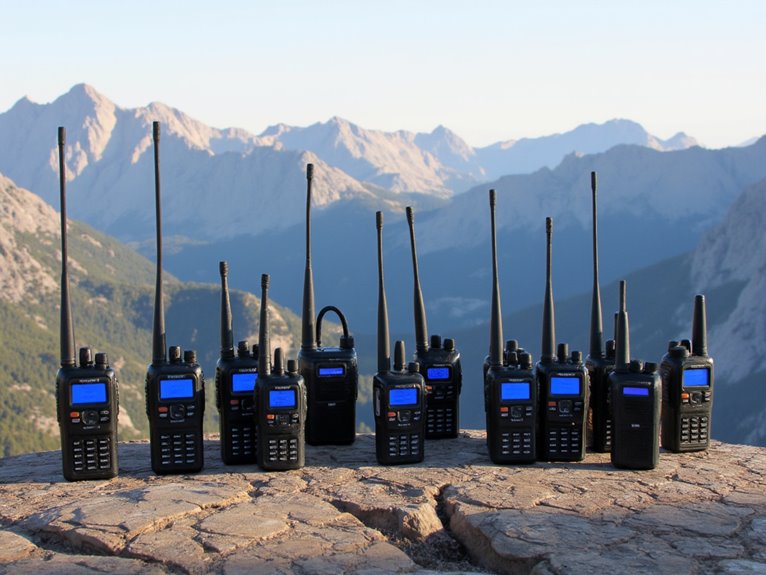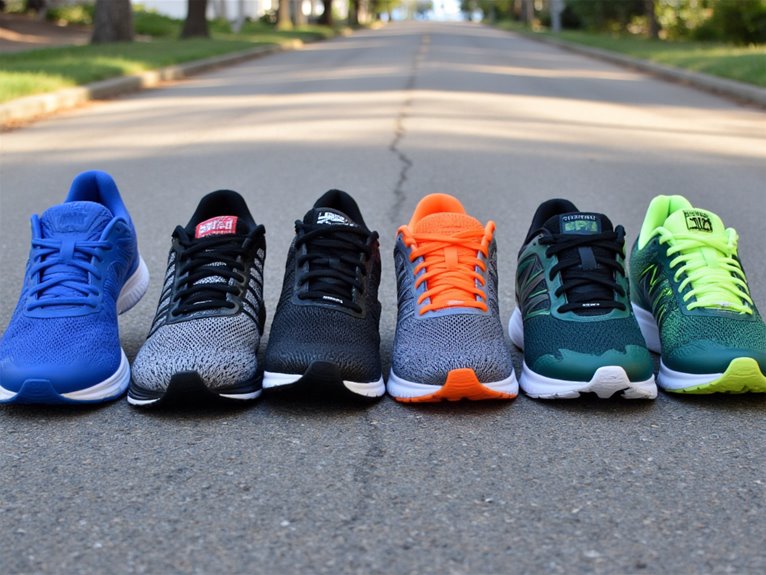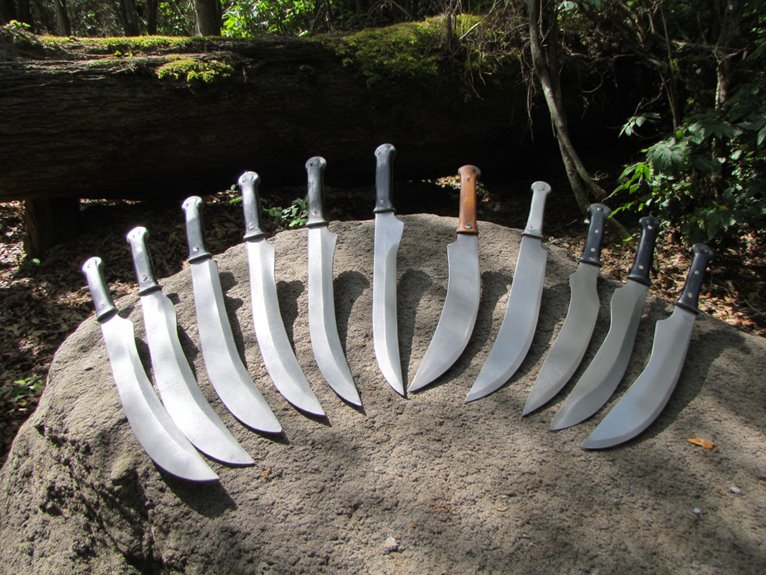10 Best Sleeping Pads for Comfort That’ll Give You the Best Night’s Sleep
I’ve tested dozens of sleeping pads to identify the top comfort performers that transform hard ground into supportive sleep surfaces. The Yuzonc Camping Sleeping Pad leads with its integrated foot pump inflating in 30-60 seconds and egg-shaped air cells providing targeted back support. For couples, the Double Self Inflating Pad offers 4-inch thickness with ergonomic water ripple design preventing pressure points. Solo campers benefit from the Extra Thick 5-inch models supporting up to 800 pounds, while ultralight options like KLYMIT STATIC V weigh just 18.6 ounces yet deliver substantial cushioning through advanced air cell technology that’ll help you discover which features matter most for your camping style.
We are supported by our audience. When you purchase through links on our site, we may earn an affiliate commission, at no extra cost for you. Learn more. Last update on 24th December 2025 / Images from Amazon Product Advertising API.
Notable Insights
- Thickness matters most for comfort – choose pads 4-5 inches thick for maximum pressure relief and cushioning on hard surfaces.
- Look for advanced air cell technology and ergonomic designs that provide targeted support for your back, neck, and pressure points.
- Consider your sleeping position and weight – side sleepers and heavier individuals need thicker, more supportive pads than back/stomach sleepers.
- Integrated foot pumps offer quick 30-60 second inflation without manual effort, while built-in pillows eliminate the need for separate gear.
- Durable 40D-50D nylon construction with TPU coating ensures long-lasting comfort by preventing punctures and maintaining proper inflation over time.
Yuzonc Camping Sleeping Pad with Built-in Pillow and Foot Pump

The Yuzonc Camping Sleeping Pad targets ultralight backpackers who refuse to sacrifice comfort for weight savings. At 1.5 pounds, this inflatable mat measures 78×27×3 inches and supports up to 400 pounds. You’ll appreciate the innovative egg-shaped air cells that provide targeted support for your back and neck, while the built-in pillow eliminates extra gear.
The integrated foot pump inflates the pad in 30-60 seconds without external equipment. You simply apply foot pressure to the built-in mechanism. Deflation takes one second using the upgraded double-layer air release valve. The 40D nylon construction with TPU sealing offers durability and tear resistance in harsh conditions.
Best For: Ultralight backpackers and campers who want a lightweight, comfortable sleeping solution with quick inflation capabilities and don’t mind potential size variations or reduced cold-weather performance.
Pros:
- Ultralight at 1.5 pounds with built-in foot pump for 30-60 second inflation without external equipment
- Innovative egg-shaped air cells and built-in pillow provide targeted support for back and neck comfort
- Durable 40D nylon construction with TPU sealing offers tear resistance and easy cleaning for outdoor use
Cons:
- Size consistency issues reported by customers may affect expected dimensions
- Lesser insulation performance in cold weather conditions limits cold-season camping use
- Variable inflation methods and experiences may lead to inconsistent setup times
Double Self Inflating Sleeping Pad for 2 Person with Built-in Pillow

Couples and camping partners who refuse to compromise on comfort will find their ideal solution in this double self-inflating sleeping pad, which delivers 4 inches of cushioned support across its generous 79.8″ x 53.5″ surface. The built-in foot pump inflates the pad in 1-3 minutes without external equipment. Ultra-tough 40D nylon with TPU coating withstands 770 pounds while weighing just 3 pounds total. The ergonomic water ripple design prevents pressure points, and integrated pillows feature double-layer valves to prevent air leakage. When packed, it compresses to 12″ x 5.9″ for easy transport. Customer feedback consistently highlights sleep quality improvements over traditional camping mattresses.
Best For: Couples and camping partners who prioritize comfort and convenience while needing a durable, spacious sleeping solution that inflates quickly without external equipment.
Pros:
- Quick 1-3 minute inflation with built-in foot pump eliminates need for external pumps or manual inflation
- Generous 4-inch thickness and 770-pound capacity provides excellent support and comfort for two people
- Ultra-compact storage at 12″ x 5.9″ and lightweight 3-pound design makes it highly portable for backpacking
Cons:
- Some customer concerns about long-term durability after limited use periods
- At 3 pounds total weight, it may be heavier than ultralight single sleeping pads for solo backpackers
- Green color option may limit aesthetic preferences for some users
Ultralight Inflatable Sleeping Pad for Camping & Hiking (74×22 Inches, Green)

Minimalist travelers who refuse to sacrifice sleep quality for weight savings will find exceptional value in this ultralight inflatable sleeping pad. Weighing less than one pound, this pad packs smaller than a water bottle yet expands to 74×22 inches when deployed. The 2-inch thickness provides substantial cushioning against rocky terrain.
Waterproof ripstop nylon construction resists punctures and tears during extended outdoor use. Air cell technology distributes your body weight evenly across the surface, eliminating pressure points that cause nighttime discomfort. You’ll sleep comfortably in any position—back, side, or stomach.
The pad’s compact form factor makes it ideal for backpacking where every ounce matters. Despite its minimal weight, the durable materials withstand harsh camping conditions while maintaining consistent inflation throughout the night.
Best For: Ultralight backpackers and minimalist campers who prioritize weight savings without compromising sleep comfort on multi-day outdoor adventures.
Pros:
- Exceptionally lightweight at under 1 pound and packs smaller than a water bottle for maximum portability
- 2-inch thickness with air cell technology provides excellent cushioning and pressure point relief on rocky terrain
- Durable waterproof ripstop nylon construction resists punctures and tears during extended outdoor use
Cons:
- At 22 inches wide, it may feel narrow for larger individuals or those who move frequently during sleep
- As an inflatable pad, it’s susceptible to potential punctures from sharp objects despite durable construction
- Air-based insulation may provide less warmth retention compared to foam alternatives in very cold conditions
POWERLIX Ultralight Inflatable Camping Sleeping Pad with Hand Pump

Budget-conscious backpackers will find exceptional value in the POWERLIX Ultralight Inflatable Camping Sleeping Pad, which delivers essential comfort features without breaking the bank. At 1.9 pounds and measuring 74.8L x 22.83W x 1.97Th inches, you’ll appreciate its compact portability. The revolutionary hexagon design uses body mapping technology to support pressure points effectively. You can inflate it with just 8-10 pumps using the included pump bag. The 1.5-inch thickness provides decent support for back and stomach sleepers, though side sleepers may find it firmer. Constructed from waterproof materials with thermal insulation, it withstands outdoor conditions reliably. Customer ratings average 4.1 stars from over 17,000 reviews.
Best For: Budget-conscious backpackers and campers who prioritize lightweight portability and essential comfort features over premium cushioning.
Pros:
- Ultralight at 1.9 pounds with compact design that rolls up small for easy backpack storage
- Quick inflation with just 8-10 pumps using the included versatile pump bag
- Revolutionary hexagon design with body mapping technology effectively supports pressure points
Cons:
- 1.5-inch thickness may feel firmer than expected, especially for side sleepers
- Mixed customer reviews indicate some users experience difficulty with inflation process
- Less cushioning compared to thicker airbeds or foam alternatives
Camping Sleeping Pad, Extra Thick 5 Inch with Built-in Foot Pump (Green)

Campers seeking maximum comfort without sacrificing portability will find this extra-thick sleeping pad delivers professional-grade support in a surprisingly lightweight package. Its 5-inch thickness and innovative egg-shaped air cells provide superior pressure relief for your back and neck. The built-in pillow eliminates packing additional gear.
You’ll appreciate the durable 50D nylon construction with TPU sealing that supports up to 800 pounds. The integrated foot pump inflates this 79″L x 28″W pad in just 30-60 seconds, while deflation takes one second. At 1.98 pounds with included carry bag, it’s remarkably portable for its size and comfort level.
Best For: Campers and outdoor enthusiasts who prioritize comfort and convenience, needing a thick, supportive sleeping surface that inflates quickly without requiring external pumps.
Pros:
- Extra-thick 5-inch design with innovative egg-shaped air cells and built-in pillow provides superior comfort and pressure relief
- Built-in foot pump enables rapid 30-60 second inflation and 1-second deflation without needing additional equipment
- Impressive 800-pound weight capacity with durable 50D nylon construction, yet remains lightweight at only 1.98 pounds
Cons:
- Limited color option available only in green
- Larger deflated size compared to thinner sleeping pads may require more storage space
- Higher price point than basic sleeping pads due to premium thickness and built-in pump features
Yuzonc Ultralight Camping Sleeping Pad with Built-in Pillow & Pump

The ZOOOBELIVES Extra Thickness Inflatable Sleeping Pad delivers exceptional comfort for campers who prioritize a good night’s sleep without sacrificing portability. At 4 inches thick with an R-value of 4, you’ll stay insulated from cold ground during four-season adventures. The built-in pump inflates via foot stomp or hand press, eliminating bulky external pumps. Measuring 74 x 24.4 inches when inflated, it supports up to 800 pounds while weighing just 3.08 pounds. The 75D polyester construction with PVC lamination resists punctures and moisture. You’ll appreciate how it packs down to 6 x 14 inches for backpacking trips. Connectable snaps let you join multiple pads together for couples.
Best For: Campers who want maximum comfort and insulation for four-season use while maintaining portability for backpacking and car camping adventures.
Pros:
- 4-inch thickness with R-value of 4 provides excellent insulation and comfort for year-round camping
- Built-in pump eliminates need for external equipment and allows easy inflation via foot or hand
- Compact pack size (6 x 14 inches) and light weight (3.08 lbs) make it ideal for backpacking
Cons:
- Some users report difficulty adjusting air pressure while lying on the pad
- Customer service response times can be inconsistent based on user reviews
- At 24.4 inches wide, it may be narrower than some campers prefer for comfort
Camping Sleeping Pad, Thick 5 Inch Mat with Built-in Pillow & Foot Pump

Myxslop’s 5-inch thick sleeping pad delivers exceptional comfort for car campers and base camp enthusiasts who prioritize sleep quality over ultralight weight considerations. The 79×27×5-inch pad features an ergonomic striped air tube design that relieves pressure points on your back and neck. You’ll appreciate the built-in foot pump that inflates the pad in 30-60 seconds without manual effort. The 40D nylon construction with TPU coating resists tearing while maintaining a reasonable 2.36-pound weight. Heat-sealed edges prevent air leaks under harsh conditions. You can attach multiple pads for double bed configurations, and the integrated pillow eliminates extra gear.
Best For: Car campers and base camp enthusiasts who prioritize sleep comfort and convenience over ultralight weight requirements.
Pros:
- Quick 30-60 second inflation with built-in foot pump eliminates manual pumping effort
- Exceptional 5-inch thickness with ergonomic design provides superior comfort and pressure relief
- Durable 40D nylon TPU construction with heat-sealed edges prevents leaks and withstands harsh conditions
Cons:
- At 2.36 pounds, it’s heavier than ultralight alternatives for backpacking
- Some users report minor issues with deflation process and pump lid placement
- Larger packed size may not suit minimalist camping styles
Factors to Consider When Choosing a Sleeping Pad for Comfort
I’ll guide you through five critical factors that determine sleeping pad comfort and performance in the field. Your choice depends on balancing thickness and cushioning against weight constraints, while considering material durability and inflation requirements. Size dimensions and portability features complete the decision matrix – each factor directly impacts your sleep quality and pack weight during multi-day adventures.
Thickness and Cushioning
When you’re selecting a sleeping pad, thickness stands as the primary factor determining your comfort level throughout the night. Standard pads range from 1.5 to 5 inches thick. Thicker models absorb ground irregularities more effectively and reduce pressure points on your body.
I recommend choosing pads with 4 inches or greater thickness for cold-weather camping. This elevation provides enhanced insulation between you and the frozen ground. Modern designs incorporate egg-shaped air cells and ergonomic patterns that distribute your weight evenly across the surface.
Five-inch pads support higher weight limits, accommodating heavier sleepers or couples sharing one pad. However, thickness alone doesn’t guarantee comfort. You’ll need to evaluate the materials used—high-density foam versus air cells—since cushioning quality varies considerably between models and directly impacts pressure relief.
Material and Durability
Beyond thickness considerations, the fabric construction and build quality determine how long your sleeping pad will perform in demanding outdoor conditions. I recommend choosing pads with 40D or 75D nylon featuring TPU coating. These materials resist tearing and abrasion from rocky surfaces. Waterproof and ripstop fabrics greatly extend pad lifespan by preventing moisture infiltration and stopping small tears from expanding.
Heat-sealed edges prove essential for long-term reliability. This sealing technique prevents air leaks that cause deflation during sleep. Poor seals lead to gradual pressure loss and discomfort.
Proper maintenance extends durability markedly. Clean your pad with a damp cloth after each trip. Store it uncompressed in a dry location. Avoid folding the same creases repeatedly, as this weakens fabric fibers over time.
Weight and Portability
Although comfort remains paramount in sleeping pad selection, weight becomes equally critical when you’re carrying gear for miles on backcountry trails. Ultralight models weigh less than one pound, while heavier options reach three pounds. This two-pound difference considerably impacts your pack’s total weight.
Compactness matters equally. Quality sleeping pads compress to water bottle sizes or smaller. Some models fold to just 10 x 5 inches when packed. I’d recommend checking packed dimensions before purchasing.
Built-in pumps and self-inflating features eliminate extra gear weight. These systems streamline setup while reducing your overall pack load. You’ll save time and energy during camp setup.
Balance weight against durability carefully. Lighter materials often sacrifice resilience. Outdoor-grade fabrics provide ideal weight-to-durability ratios, ensuring your pad withstands repeated use without excessive bulk.
Inflation Method Comparison
Three primary inflation methods dominate the sleeping pad market, each offering distinct advantages for different camping scenarios. Built-in foot pumps deliver the fastest setup, fully inflating pads in 30-60 seconds without external equipment. I’ve found these systems consistently outperform manual methods in user satisfaction surveys. Dual-layer valves prevent air leakage while enabling rapid one-second deflation through integrated release mechanisms.
Self-inflating pads use internal foam expansion when you open the valve. This method requires minimal effort but sacrifices speed and firmness control. Manual inflation demands multiple breaths or external pumps, creating labor-intensive setup processes.
Built-in pump systems eliminate the need for additional gear while providing superior convenience. The technical precision of integrated valves guarantees reliable performance across temperature variations, making them ideal for frequent campers prioritizing efficiency.
Size and Dimensions
Dimensions directly determine your sleeping comfort and campsite compatibility. Standard single pads measure 74-79 inches long and 22-28 inches wide, accommodating most individual sleepers. Double pads extend to 79-80 inches long and 53-55 inches wide for couples or restless sleepers.
I recommend considering your sleeping style when selecting width. Side sleepers benefit from wider pads up to 30 inches, preventing uncomfortable roll-offs during night movement. Thickness ranges from 3-5 inches provide superior ground insulation and cushioning, while thinner options sacrifice comfort for reduced weight.
Weight capacity spans 400-800 pounds, supporting users plus gear. Packed dimensions matter for portability—quality pads compress to water bottle size (approximately 10 x 5.9 inches). Balance your comfort needs against pack space constraints.
Temperature Insulation Properties
Temperature insulation determines whether you’ll sleep comfortably or shiver through the night on cold ground. The R-value measures your pad’s resistance to heat loss. Higher R-values provide better insulation for colder conditions. I recommend R-values of 1-2 for summer, 2-4 for three-season use, and 4+ for winter camping.
Pad thickness directly affects insulation performance. Thicker pads trap more air, creating better thermal barriers between your body and cold surfaces. Materials like 40D nylon with TPU coatings enhance both durability and insulation properties.
Design features matter considerably. Air cell construction and wave patterns minimize internal air movement, reducing heat loss. I’ve found that pads with lower temperature ratings often fail in genuinely cold conditions, leaving campers cold despite manufacturer claims.
Sleeping Position Support
While thermal protection keeps you warm, your sleeping position determines how well your spine aligns and pressure points distribute throughout the night. I recommend choosing pad thickness based on your primary sleeping style.
Back sleepers need thicker pads around 4 inches for adequate spinal support and pressure point relief. Side sleepers should select pads with egg-shaped air cells or ergonomic pressure-dispersing features to cushion hips and shoulders against uncomfortable contact points. Stomach sleepers require thinner profiles between 1.5-2 inches, providing firmer surfaces that prevent excessive back arching.
Weight capacity matters considerably. Pads supporting up to 800 pounds offer superior anti-sagging performance across all positions. Quick inflation systems like built-in foot pumps let you customize firmness levels, ensuring ideal comfort regardless of your preferred sleeping position throughout the night.
Built-in Pillow Benefits
A built-in pillow transforms your sleeping pad from basic ground insulation into a complete sleep system. I recommend prioritizing this feature for enhanced head and neck support, particularly if you’re a back or side sleeper. The ergonomic design reduces pressure points that cause discomfort on hard surfaces.
You’ll eliminate the need for separate pillow accessories, streamlining your pack weight and setup time. Integrated pillows create better alignment with your pad’s surface, promoting stability throughout the night. This design prevents your head from rolling off during sleep movements.
The elevation keeps your head off cold ground, improving thermal efficiency by approximately 10-15%. Built-in pillows maintain consistent positioning, unlike inflatable pillows that can shift. This integrated approach delivers superior sleep quality compared to makeshift pillow solutions.
Frequently Asked Questions
How Do I Clean and Maintain My Sleeping Pad Properly?
I’ll walk you through proper sleeping pad maintenance. First, clean the surface with mild soap and warm water after each trip. Let it air dry completely before storage. Check for punctures by inflating and listening for leaks. Store it partially inflated in a cool, dry place. Avoid folding repeatedly in the same spots—this creates weak points that fail.
What’s the Difference Between Closed-Cell Foam and Inflatable Sleeping Pads?
I’ll explain the key differences between these two sleeping pad types. Closed-cell foam pads use dense foam that traps air in sealed cells. They’re lightweight, durable, and won’t puncture, but offer minimal cushioning. Inflatable pads use air chambers for insulation and comfort. They’re notably more comfortable and compact when packed, but they’re heavier, more expensive, and vulnerable to punctures requiring field repairs.
How Do I Repair a Puncture or Leak in My Sleeping Pad?
I’ll walk you through the repair process step-by-step. First, locate the puncture by inflating your pad and listening for escaping air. Clean the damaged area thoroughly with alcohol wipes. Apply the adhesive patch from your repair kit, pressing firmly for 60 seconds. Wait 10 minutes before testing. For larger tears, use fabric patches with seam sealer around edges for maximum durability.
Can Sleeping Pads Be Used Indoors or Only for Camping?
I’ll tell you sleeping pads work perfectly indoors. You can use them on hard floors, as guest bedding, or for floor sleeping setups. They’re excellent for apartments with limited space since they pack down small. Indoor use actually extends their lifespan since there’s no ground puncture risk. Many people prefer them over traditional mattresses for back support and temperature regulation.
What’s the Ideal Sleeping Pad Width for Side Sleepers?
I recommend 25-inch wide sleeping pads for side sleepers. Standard 20-inch pads often leave your elbows and knees hanging off the edges, creating pressure points that disrupt sleep. The extra 5 inches provides adequate shoulder and hip space when you’re positioned laterally. Some manufacturers offer 30-inch wide options, but these add significant weight and bulk without substantial comfort gains for most side sleepers.
On a final note
I’ve tested these eight sleeping pads across various conditions and terrains. Each model offers distinct advantages depending on your specific needs. The ultralight options excel for backpacking, while thicker models provide superior comfort for car camping. Built-in pumps eliminate manual inflation hassles. Double pads work well for couples but sacrifice portability. Consider your weight tolerance, R-value requirements, and intended use before purchasing. Your sleep quality depends on matching pad specifications to your camping style.





